What kind of putty to use for decorative plaster. Decorative plaster, master class
When you are making repairs and it is time to complete decorative trim walls, the question immediately arises, what material to use for this purpose. I want it to be both beautiful and not difficult with minimal cost... Today, manufacturers offer a lot finishing materials... All of them differ in their composition, application method, price and characteristics. One of the best materials, which has been popular for many years, is decorative plaster. The material is quite effective, durable, practical, looks beautiful and is easy to process. Decorative plaster is an ideal choice for such work. But, not everyone has the opportunity to purchase it. If you want to execute decorative processing walls without disposable funds, then this material is for you.
We'll look at tutorials and instructional videos to learn how you can make decorative plaster from a simple putty. it a budget option to reduce costs. Nevertheless, the result will please you.
Varieties of decorative plaster
First, let's figure out what types of decorative plaster are. Thanks to different composition and the end result, wall processing products can be divided into the following classes:
- Structural plaster with inclusions ("fur coat", "bark beetle"). Has a peculiar appearance. Due to inclusions, fine-grained and coarse-grained plaster are separated. The grain size is in the range of 0.6-3 mm.
- Textured plaster, to give the surface a smooth relief. Plastic enough, it is easy to work with it. After applying the mixture, it is formed, creating various forms and effects - panels, bas-reliefs, etc. Then the surface is painted or tinted.
- Venetian plaster imitating a marble surface. Is versatile, you can achieve imitation valuable breeds stone, but you can create design drawings and a kind of decor on the surface. When working, there are some difficulties: the material should be applied in several layers, rubbed over and processed.
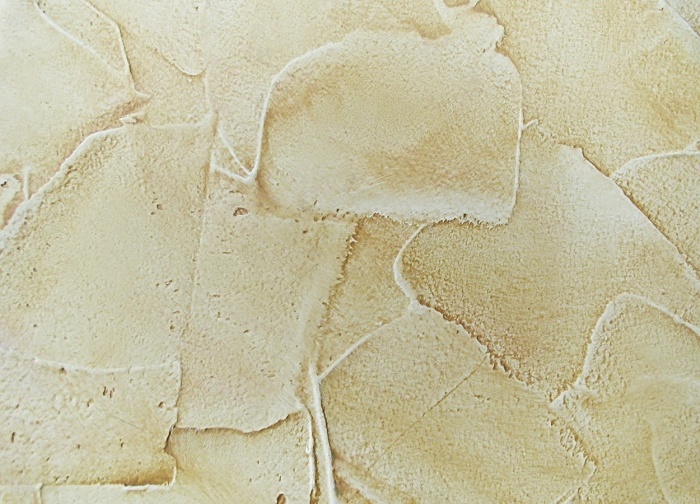
If you are familiar with the construction business, then you have already encountered such types and even, perhaps, performed work on their application. But how to make one of these types of decorative plaster using ordinary putty? You will learn all this further.
Preparatory work
First, you need to prepare necessary tools and materials for work. The list is standard, as for ordinary work with putty:
- gypsum plaster;
- a set of spatulas of various sizes;
- plumb line and building level;
- metal brush;
- mixer for mixing:
- a spatula for the mixture;
- grater and trowel;
- material for forming different surfaces(more details below).

With this simple arsenal of tools, you can make the surface the way you want. All work can be conditionally divided into several key stages:
- Surface preparation for plastering.
- Application of the base layer.
- Formation of various textures and structures in one way or another.
- Finishing stage.
In principle, the work is not difficult, if you have worked with plaster before, then you will not have any special problems. And for the one who does everything for the first time, you need to follow the instructions, carefully adhering to the technology. In addition, video tutorials on making decorative plaster from putty will help you.
Stage 1 - surface preparation
Perhaps this step is indispensable. The plaster should be applied to cleaned walls, free from visible defects and cracks. Preparatory work are as follows:
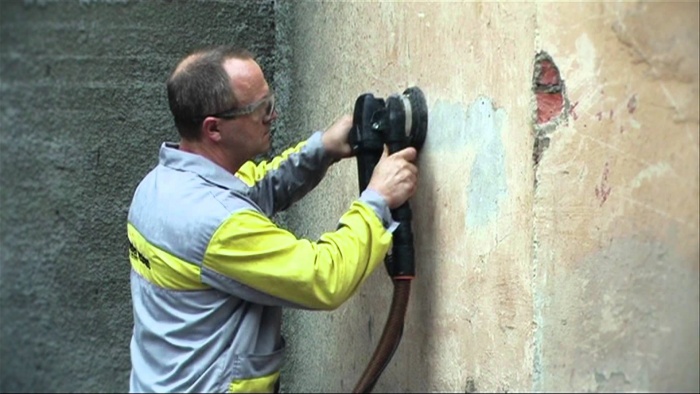

Note! The deep penetration primer can be applied with a brush or roller. All areas must be carefully processed. Then let the wall dry for 10-12 hours.
Stage 2 - applying the base coat
It's time to make 1 base coat. But first you need to prepare the plaster for work. You will need a bucket or other container, a mixer, water, and the dry mixture itself.
Preparation of the mixture
The package contains instructions for preparation and proportions. The process is as follows:
- water is poured into the bucket;
- putty is poured there and mixed with a mixer;
- now leave the mixture to ripen for 5-10 minutes;
- mix the contents again and get to work.

Note! To prevent the putty from drying out, mix as much material as you can apply to the surface within a short period of time. Take your strengths and skills into account.
The consistency of the finished plaster should resemble sour cream, not liquid and without lumps.
Advice ! To quickly clean your mixing head, soak it immediately after mixing. Dried plaster will be more difficult to peel off.
Plastering
Now, using a trowel, you need to apply a layer of plaster to the wall and do the plastering. The mixture is stretched over the surface in an even layer (you can use the rule).

Important ! The thickness of the plaster layer must be selected taking into account the height of the texture you have created. Usually it is 1-1.5 mm.
Once the plaster has been applied, you can begin to form patterns, textures and textures.
Stage 3 - the formation of a textured coating
Now the most important thing is decorative plaster from ordinary putty. Depending on the desired texture and pattern, the technology will change. To give the surface decorative view, you will need tools like this:
- roller, textured or regular;
- ready-made stencils;
- brush, notched trowel, trowel;
- ordinary plastic bag.
What to do with them? One method is to use a roller. Without waiting for the applied plaster to dry, simply slide the roller along the wall in vertical movements. This creates a pattern that resembles ruffled velor. Note that the more you press the roller, the more irregularities will form. For the best effect, the roller can be tied with tack or cellophane. And to make a drawing on the wall, just buy a roller with a texture. From the video below, you will see how it works and the end result.
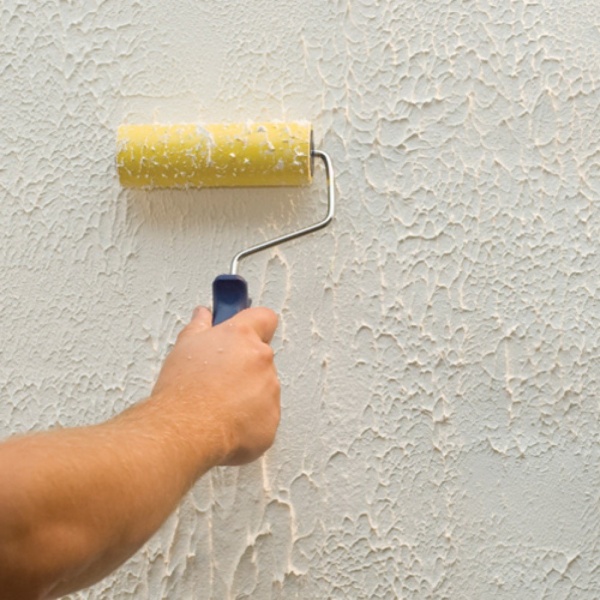
note! If you don't have a roller at hand, a similar effect can be done with an ordinary trowel. It is enough to press its canvas against the wall and return it to its original position.
Another method is fish scales. There is nothing complicated. It all comes down to correct application plaster. It is applied with a spatula in pieces, without smoothing. Just place the spatula against the surface for a few seconds and pull it back to make uneven surface... We invite you to watch a video on how to implement everything in life.
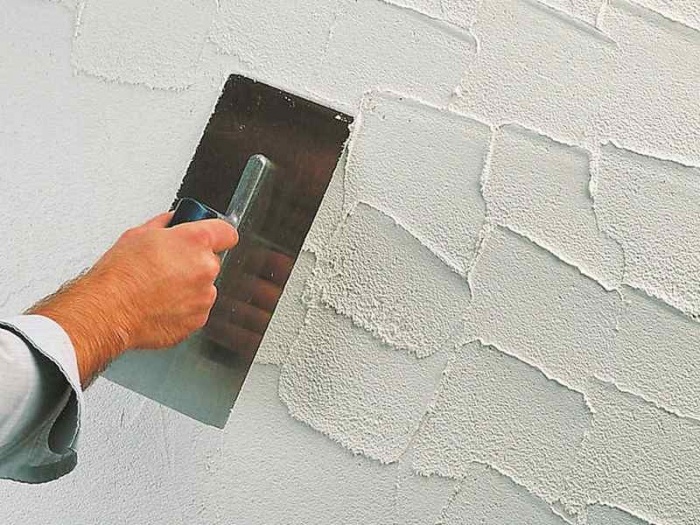
A brush is another simple method to make a regular putty decorative. The essence of the work is to make the applied putty dry a little, but not completely dry. Then, using a brush, brush it over the surface, creating furrows. You can make them straight, round, semicircular, oblique - it all depends on desire and imagination.
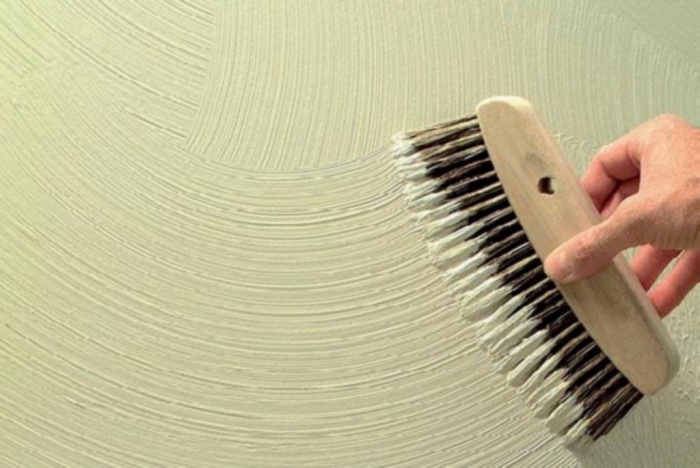
To give texture, a notched spatula, cellophane, an ordinary sponge are suitable - everything that can be used to make a pattern. In hand experienced master, simple plaster can turn into a work of art.
Stage 4 - finishing
It remains to wait for the plaster to dry (24 hours). Then the surface should be smoothed sandpaper or with a grater. But, just a white surface does not look so impressive, so the wall needs to be painted. Please select suitable color and apply it in 2 coats with a roller. Then, after drying, treat the surface with a colorless varnish. That's all, the job is done.
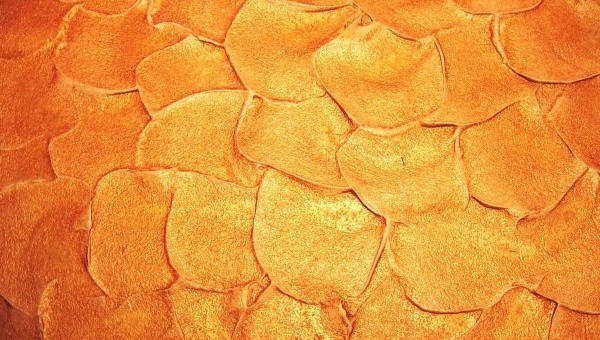
You received beautiful surface with minimal costs. Another way to apply decorative plaster from ordinary putty, you will see from the video.
Decorative plaster is very popular because it can be used to create a stunning interior for any room. But the price of such a solution is quite high, so many people make decorative plaster from putty with their own hands. This is a rather laborious process that will require certain skills and knowledge from you. However, in doing so, you can save a lot. In this article, we will tell you the nuances of cooking yourself, as well as provide educational video tutorials so that you can see the whole process of work.
Which putty to choose
To ensure a long service life of the coating, you need to choose only the right and high-quality materials for the preparation of decorative plaster. Decorative mixtures are suitable for both interior and exterior work, for example, for finishing the facade of a building.
For exterior walls, it is better to choose a universal putty or a cement-based mixture. For internal works any will do, the main thing is that it is convenient to work with it. The instructions and the purpose of the material are often written on the packaging, so we recommend that you familiarize yourself with them before buying.
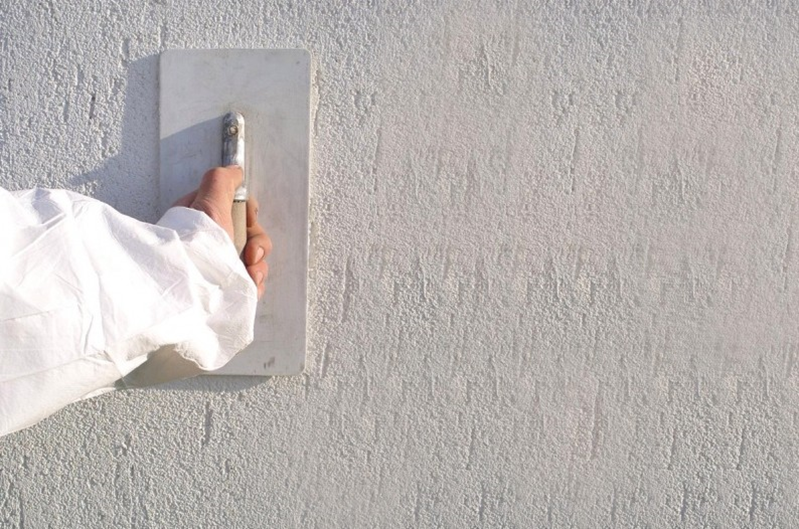
Remember that the putty is produced and produced in the form of a ready-made mixture or powder. Before use, the powder must be additionally diluted according to the instructions from the manufacturer, which is indicated on the package. Both types have the same qualities, so the choice will only depend on your preferences. We recommend watching the following video to learn more about the properties of the putty and its use:
What tools will be needed
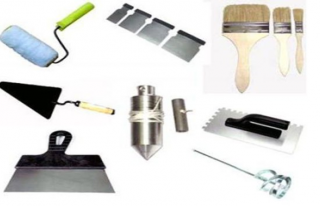
Immediately after preparation, the plaster will need to be applied to the wall so that the solution does not dry out. Remember that the surface must also be prepared in advance. It is necessary to rid it of the old coating and dust, if necessary, repair irregularities and other defects. We also recommend treating the wall with ordinary plaster to make it absolutely flat and smooth. All preliminary work can be seen in the following video:
Decorative plaster from putty
The unusual effect after the treatment of walls with decorative plaster is due to the properties of its texture. You will not be able to create complex textures on your own, but even a beginner in the construction business can handle simple textures. Let's take a closer look at each option and how to create it.
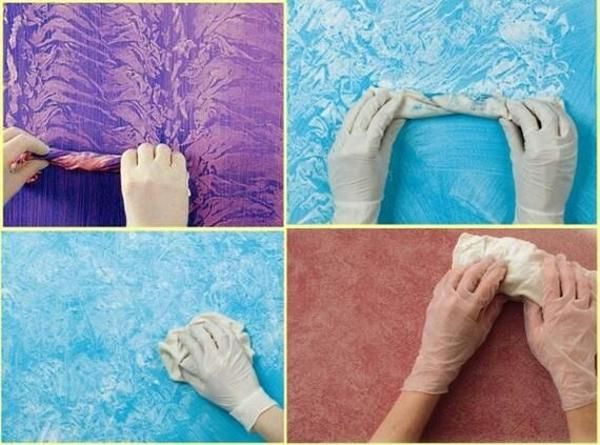
Fur coat
This texture is presented in the form of a needle-like coating and looks great on the surface. Suitable for both indoor and external cladding walls.
For work, you need a solution of plaster and pieces of polyethylene. If you plan to focus on the pattern, it is better to use dense polyethylene, and for a smoother coating, thin polyethylene.
The putty must be diluted with water, it is necessary that the mixture is fixed on the wall and at the same time stretches behind the polyethylene.

The first step is to apply the mixture to the wall. remember, that further processing will hide all the minor flaws. Then, you can proceed to creating the texture of the coating.
If you plan to create coarse needles, you need to crush a piece of polyethylene and apply it to the wall until the desired texture is formed on the entire surface area. Remember that at this stage, any mistake can be corrected by simply leveling the coating and starting the procedure again.

If you plan to create a smoother relief, you need to attach a cut to the wall soft material equal in size to the coverage area. He must hold out on the wall for a day, and then he can be removed. After such a procedure, the desired texture is formed. To see the creation of the fur coat texture in practice, we recommend watching the following video:
Creative
If you wish, you can create an unusual and original texture, which will be extremely difficult to repeat. To do this, the paint roller is sheathed with leatherette, so that as a result, chaotic folds form on the material. Then the entire surface is processed with this tool. As a result, on the wall you will get an unusual texture with chaotic bulges.
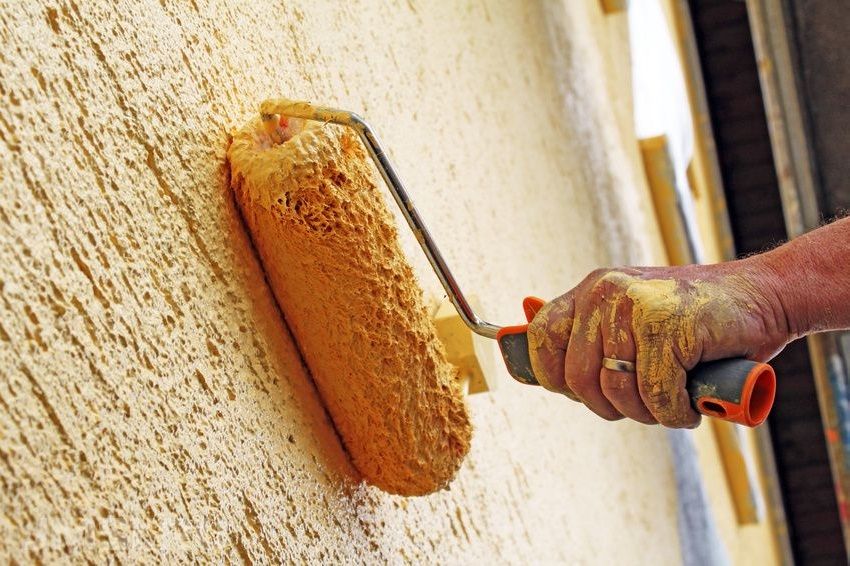
Bark beetle
The bark beetle is rightfully considered the most popular type of decorative plaster, but even it can be recreated using a putty material. To do this, you must use a trowel - this is a tool that is metal plate with a handle.

The putty should be applied to the wall in small patches, with a layer of about three millimeters. Then, a trowel is applied to the wall. In this case, the gap between the tool and the wall should be several millimeters. Then, in one motion, slide the trowel along the wall. Thus, the air that remains under the instrument will create an unusual ornament. This is how each section of the wall is processed. It is best if the patterns are located diagonally. We recommend watching the following video to see the procedure for creating an ornament:
Fish scales
To recreate such a texture, you need to prepare a putty and a spatula. Keep in mind that the wider the trowel is, the larger the pattern will be.
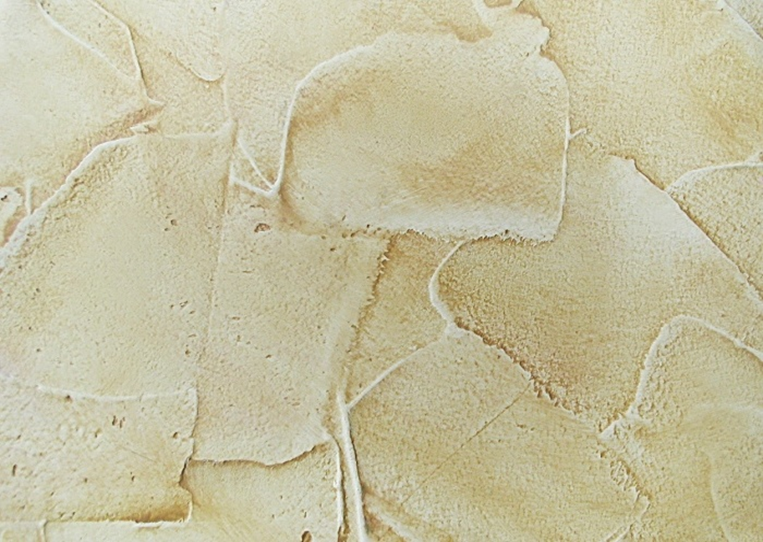
The material is applied to a small area of the wall with a layer of about 4 millimeters. Then, starting from the corner, a spatula is applied, pressing the mortar into the coating. For all patterns to look even, the pressure should be the same in every area. The texture can be arranged in a checkerboard or chaotic manner, the choice will depend only on you. In case of a mistake, the mixture can be leveled and the procedure can be started over. Try to work as quickly as possible so that the solution does not dry out. Watch the following video to see the application procedure:
Output
As you can see, creating decorative plaster from ordinary putty is quite a simple task. The main thing is to carefully follow the recommendations and use quality materials. Remember that if you make a mistake, you can always start the procedure again. With the help of the video tutorials provided in the article, you can see examples and understand how to properly make decorative plaster with your own hands. We also recommend watching another video that will tell you in more detail about creating decorative plaster:
High-quality decorative plaster is the key to the success of the future interior. But high-quality plaster does not mean made by professionals, success can be achieved by making it yourself. A conscientious approach is important here, do not give up halfway, do not be too lazy to redo it, if any section does not work out, do not rush. And then, guided by our master class, you will definitely be able to make a good decorative plaster with your own hands with ordinary putty.
Decorative plaster with putty
Be sure to stock up quality materials and tools, and you can start applying the plaster.
Materials (edit)
This master class will tell you how to make your own individual, unlike anyone else's pattern of the walls of your house with your own hands. To do this, you will need:
- finishing putty;
- water;
- primer;
- water-based paint of one or 2 shades;
- water-based varnish.
Select a primer according to the original surface material: for porous materials we take a deep penetration primer, for smooth surfaces a primer is needed to increase adhesion (adhesion) between materials. There are also universal primers on sale, carefully read the instructions when buying a product.
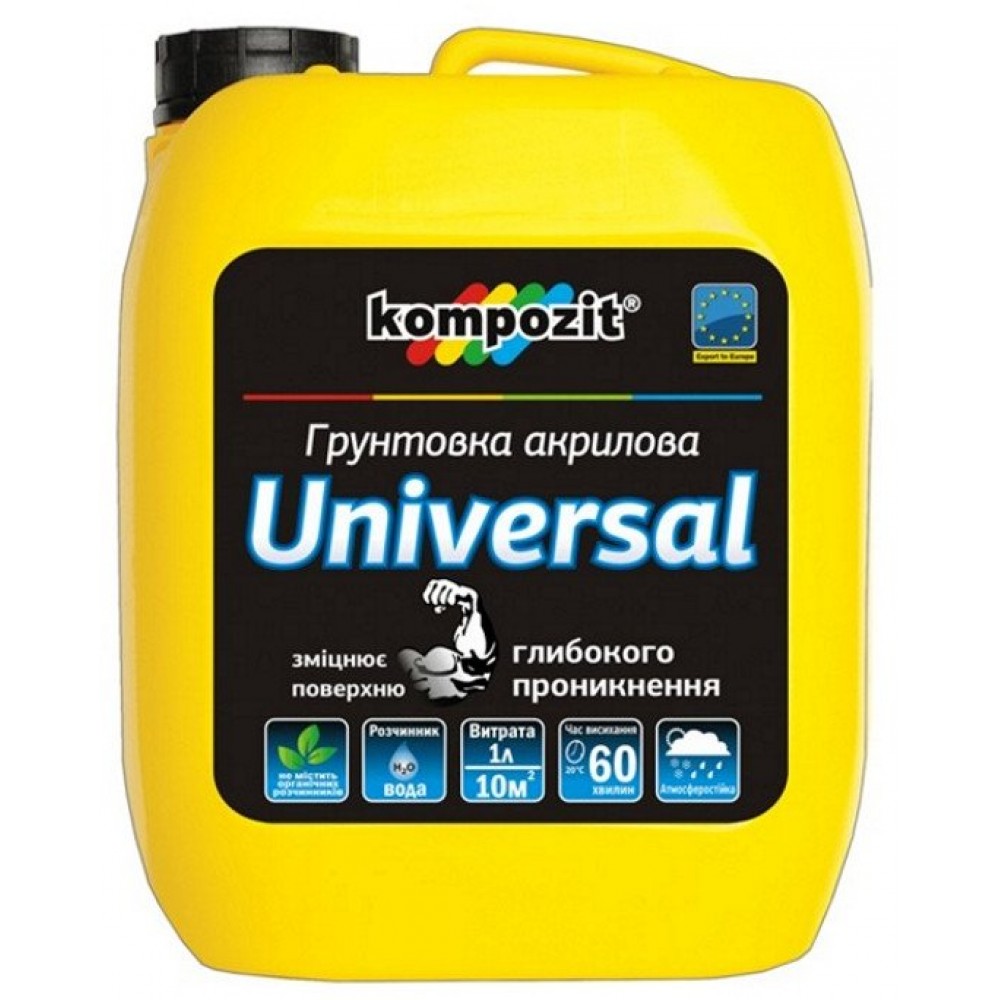
Universal primer
Take the paint in two shades, light and dark, so the relief of the decorative plaster will become clearer and deeper. Below this master class will tell you how to paint decorative plaster correctly.
Buy materials renowned manufacturers in well-known retail outlets. Only with high quality materials can you achieve the desired result.
Instruments
The set of tools may vary depending on the plaster pattern, in the master class we will give the main necessary list:
- long spatula;
- short spatula;
- fine sandpaper with a grater;
- plastic or stainless steel grater;
- container for mixing plaster;
- construction mixer;
- long-nap paint roller;
- paint brush or sponge;
- paint bath;
- pattern tool.
The last point implies the tool with which you will create the pattern. This can be a sponge, roller, a piece of plastic, a brush, etc.

Roller for decorative plaster
Surface preparation
We mean that the wall has already been leveled and plastered with rough plaster, read how to properly plaster with a cement-sand mortar here. If the wall is concrete, it is necessary to plaster it with rough plaster only in the case of a large curvature of the wall for leveling.
When this stage is ready, brush off the dust from the wall and prime the surface with an appropriate primer. Let the primer soak in and dry for about 12 hours, do not rush to proceed with further work.
First stage of finishing
Apply the first layer of decorative plaster (finishing putty) to the entire surface, the layer thickness is sufficient 2 mm.
If you took a dry mixture, dilute it with water to a plastic viscous consistency, so that it is convenient to apply it to the wall. It is better to mix in a round container with a construction mixer until all particles are dissolved.
With a small spatula, put a small amount of mortar on a wide spatula in one motion and plaster the wall with a wide spatula. When working, try not to leave scratches, and make the same layer of plaster, so that later you do not need to sand the surface. This work can also be carried out with a construction float, to whom it is more convenient.
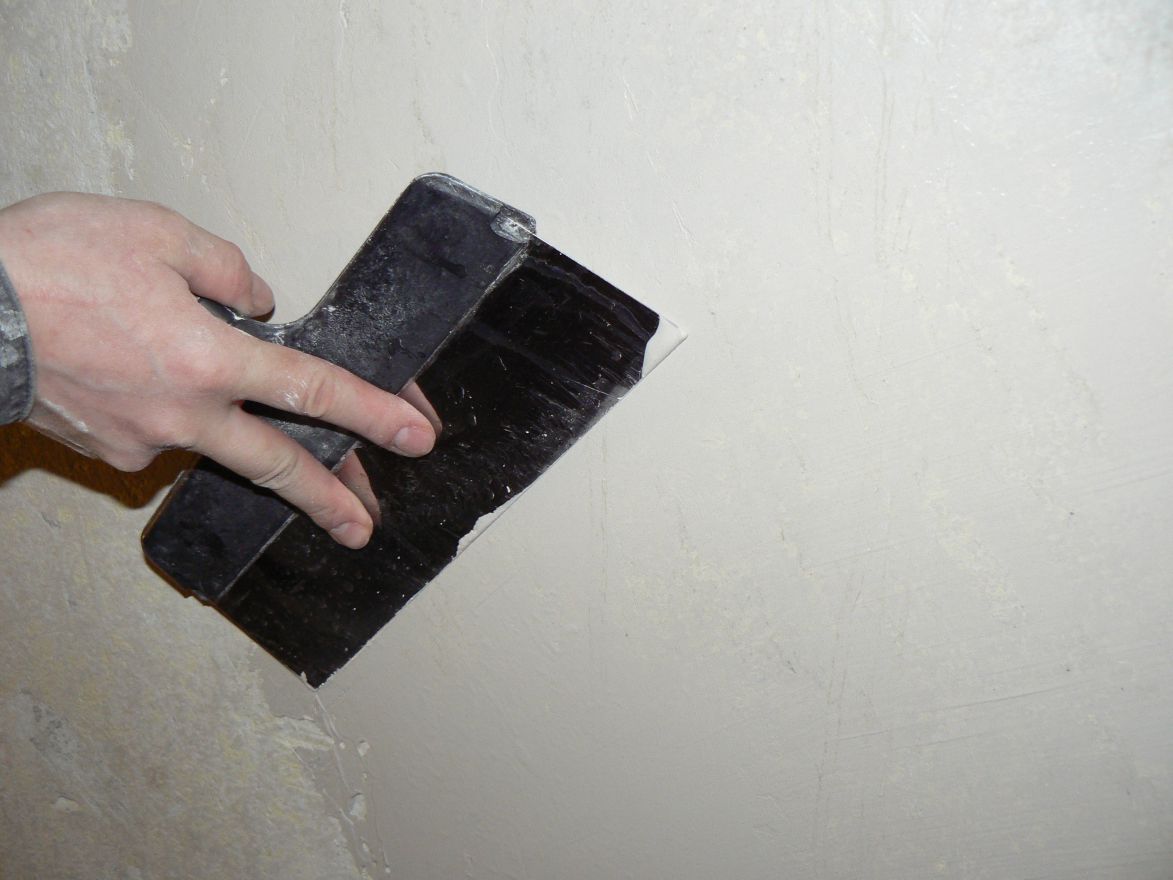
Putty the wall with a spatula
Let the first layer dry completely, it will take about 5-8 hours (read the exact drying time on the putty package). Don't look what's on appearance the putty seems dry and takes time to harden.
We sand the irregularities with sandpaper, minor defects can be left, they will be hidden by the second layer of plaster.
Second stage of application
We dilute the putty with water, the solution should not turn out to be too liquid so that it does not drip when creating a picture. Remember the exact proportions of the mortar, make the mortar the same for all walls so that the drawing is the same.
On a section of the wall, apply a putty with a spatula or a float with a thickness, depending on the desired relief depth. Then we create a drawing:
- bumps will turn out with a textured roller;
- texture roller will create a pattern on the wall;
- you can make flowers or swirls with a sponge;
- a construction float can create a scuff effect;
- we get waves and zigzags with a relief spatula.
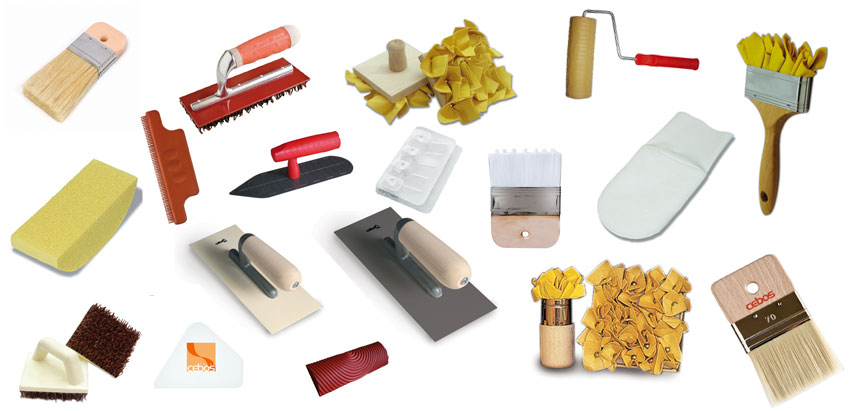
Pattern making tools
There are infinitely many options for patterns. Making them is very simple: press or drive the tool over the freshly applied putty and get the desired pattern. Practice in one area, maybe the pressure should be stronger or, conversely, softer.
We work with the pattern on fresh putty for 10-15 minutes, then it begins to dry out and the pattern may turn out to be heterogeneous.
When the second layer dries up, remove (cut off) strongly protruding putty particles with a spatula.
Painting
It can be started when the decorative plaster is completely dry.
Before painting, it is advisable to treat the plaster with a primer again.
First coat of paint
The main color of the future decorative plaster is to paint the entire wall with a long-nap paint roller. We paint over all the grooves, but make sure that the paint layer is not too thick, otherwise the relief will disappear.
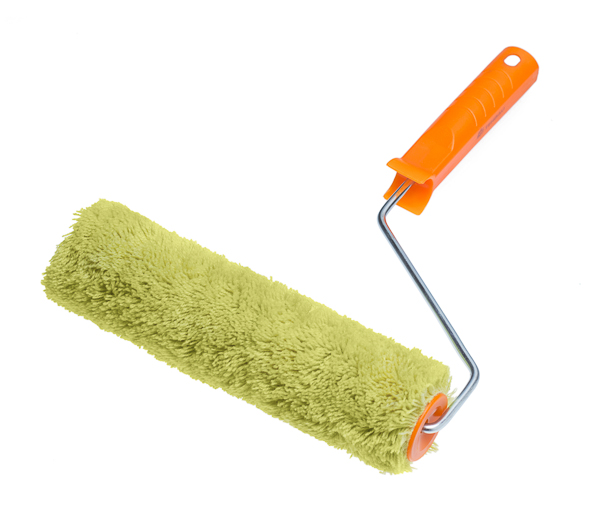
Long nap roller for the first paint coat
We are waiting for the paint to dry completely.
Second coat of paint
It is applied to create the depth of the relief. If desired, this layer can be lighter or darker than the base color.
Apply it either with a sponge or with a brush. We dip the brush into the paint, wipe it lightly on the jar and try to spread it over as much of the wall as possible. We work with a sponge in the same way, rubbing the paint along the wall in a circular motion.
Varnishing
To create gloss and to protect decorative plaster, we apply acrylic lacquer water based.
We work paint brush or a sponge. We cover the entire wall with 2 layers of varnish. We brush in one place once, because the water contained in the varnish can dissolve the paint. Apply the second layer only after the first has dried.

Finished decorative plaster of the wall with putty
The creation of decorative plaster with a putty with your own hands is ready. Working with ready-made formulations decorative plaster, paint steps could be avoided, since color is usually added immediately to them. But create the same effect as ready-mix, you can also use ordinary putty. We hope our DIY decorative plaster workshop will help you with this!
